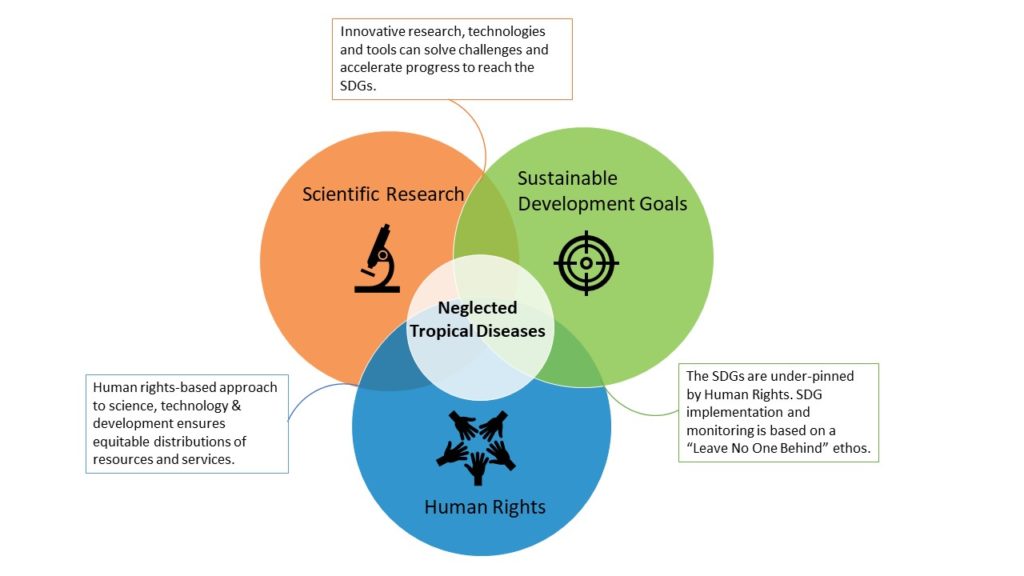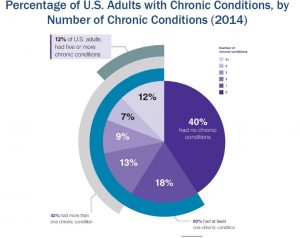Report on the Global Onchocerciasis Network for Elimination (GONE) Webinar
Advancing Sustainable Development Goals Through Neglected Tropical Disease (NTD) Integration
A webinar was convened by the Global Onchocerciasis Network for Elimination (GONE) to address the integration of Neglected Tropical Disease (NTD) programs into national health systems. The event focused on leveraging integrated strategies to accelerate progress towards several Sustainable Development Goals (SDGs), particularly SDG 3 (Good Health and Well-being).
Objective and Alignment with Sustainable Development Goals
The primary objective was to facilitate a discussion among national health ministries, implementing partners, and public health professionals on practical strategies for NTD program integration. The dialogue aimed to produce actionable recommendations that support the achievement of the SDGs by:
- Enhancing Universal Health Coverage (SDG 3.8): Integrating NTD interventions into primary health care, malaria control, and immunization campaigns strengthens health systems and makes essential services more accessible.
- Ending Epidemics (SDG 3.3): Streamlining efforts against NTDs is critical to meeting the 2030 target of ending the epidemics of NTDs, malaria, and other communicable diseases.
- Reducing Inequalities (SDG 10): By embedding NTD services within existing health infrastructure, programs can more effectively reach vulnerable and marginalized populations, reducing health disparities.
- Strengthening Partnerships (SDG 17): The event itself serves as a platform for collaboration between governments, researchers, and implementing organizations to achieve shared global health objectives.
- Promoting Quality Education (SDG 4) and Alleviating Poverty (SDG 1): Tackling NTDs, which disproportionately affect children and impoverished communities, helps improve school attendance and economic productivity.
Webinar Agenda: Country Experiences in Pursuing the SDGs
-
Introductions: Navigating Global Health Transitions – Advancing NTD Integration
Dr Maria Rebollo, WHO
This session set the context for NTD integration as a strategic imperative for building resilient health systems and achieving the targets outlined in SDG 3. -
Strengthening Integrated Approaches to NTDs: Lessons from Rwanda and Togo
Mr Ladislas Nshimiyimana, Ministry of Health of Rwanda & Dr Piham Gnossike, Ministry of Health of Togo
Case studies from Rwanda and Togo demonstrated how integrated models enhance program efficiency and sustainability, contributing directly to Universal Health Coverage (SDG 3.8) through robust partnerships (SDG 17). -
Integration of NTD interventions into primary health care services in Ethiopia, Kenya and Uganda
Mr Tesfahun Bishaw, Ministry of Health of Ethiopia; Mr Wycliff Omondi, Ministry of Health of Kenya; Dr Alfred Mubangizi, Ministry of Health of Uganda
This panel explored the foundational role of primary health care in delivering NTD services, a key strategy for ensuring equitable access to health and reducing inequalities (SDG 10). -
Embedding NTD Interventions Within Malaria Programs and Vaccination Campaigns in Madagascar and Tanzania
Dr Aina Faes Tolotra, Ministry of Health of Madagascar & Dr Clarer Jones, Ministry of Health of Tanzania
Experiences from Madagascar and Tanzania highlighted the synergistic benefits of combining NTD and malaria interventions, directly addressing the targets of SDG 3.3 to end the epidemics of both. -
Incorporating NTD Programs into Child Health Days in Benin and Niger
Dr Ndeye-Marie Adama Bassabi-Alladji, Ministry of Health of Benin & Dr Salissou Adamou Batchiri, Ministry of Health of Niger
This presentation focused on integrated child health initiatives, which not only improve child well-being (SDG 3) but also support educational outcomes (SDG 4) by treating debilitating NTDs in school-aged children. -
Discussion
An open forum for stakeholders to exchange insights and formulate strategies for scaling up integrated approaches.
-
Wrap-up and conclusions
Dr Carol Karutu, The END Fund
Concluding remarks summarized the actionable recommendations for advancing the NTD and SDG agendas through strengthened health system integration.
1. Which SDGs are addressed or connected to the issues highlighted in the article?
SDG 3: Good Health and Well-being
- The article’s central theme is the integration of Neglected Tropical Disease (NTD) programs into national health systems. This directly addresses the goal of ensuring healthy lives and promoting well-being for all, with a specific focus on communicable diseases like NTDs. The webinar aims to strengthen health systems in various countries (Rwanda, Togo, Ethiopia, Kenya, Uganda, Madagascar, Tanzania, Benin, Niger) to combat these diseases effectively.
SDG 17: Partnerships for the Goals
- The article describes a webinar that brings together a wide range of stakeholders, including representatives from Ministries of Health, implementing organizations, policymakers, researchers, and public health professionals. This multi-stakeholder collaboration, involving international organizations like WHO and The END Fund, and multiple national governments, exemplifies the partnerships required to achieve sustainable development goals. The objective is to share experiences and create actionable recommendations through collective effort.
2. What specific targets under those SDGs can be identified based on the article’s content?
SDG 3: Good Health and Well-being
-
Target 3.3: By 2030, end the epidemics of AIDS, tuberculosis, malaria and neglected tropical diseases and combat hepatitis, water-borne diseases and other communicable diseases.
The article is entirely focused on Neglected Tropical Diseases (NTDs). The webinar’s objective is to “Strengthening Health Systems Through Neglected Tropical Disease (NTD) Integration” and to “maintain consistent delivery of NTD services.” This directly supports the effort to end the epidemic of NTDs.
-
Target 3.8: Achieve universal health coverage, including financial risk protection, access to quality essential health-care services and access to safe, effective, quality and affordable essential medicines and vaccines for all.
The discussion on integrating NTD interventions into “primary health care,” “child health days,” and making “efficient use of available infrastructure” aims to improve access to essential health services for affected populations. This strategy helps move towards universal health coverage by ensuring NTD services are part of the basic healthcare package available to communities.
-
Target 3.b: Support the research and development of vaccines and medicines for the communicable and non-communicable diseases that primarily affect developing countries…
The article explicitly mentions embedding NTD interventions within “vaccination campaigns” in Madagascar and Tanzania. This integration strategy leverages existing immunization infrastructure to deliver NTD treatments, thereby supporting the broader ecosystem of vaccine and medicine delivery for diseases affecting developing nations.
SDG 17: Partnerships for the Goals
-
Target 17.16: Enhance the global partnership for sustainable development, complemented by multi-stakeholder partnerships that mobilize and share knowledge, expertise, technology and financial resources, to support the achievement of the sustainable development goals in all countries, in particular developing countries.
The webinar itself, hosted by the “Global Onchocerciasis Network for Elimination (GONE),” is a clear example of a multi-stakeholder partnership. It gathers representatives from Ministries of Health of nine different countries, WHO, The END Fund, and other public health professionals to “share experiences and insights” and “exchange real-world examples and practical solutions.”
-
Target 17.17: Encourage and promote effective public, public-private and civil society partnerships, building on the experience and resourcing strategies of partnerships.
The event structure, involving national public bodies (Ministries of Health), international organizations (WHO), and non-governmental/implementing organizations (The END Fund, GONE), is a direct application of this target. The goal is to foster collaboration between these different sectors to “optimize resources, streamline efforts, and improve impact and sustainability” of NTD programs.
3. Are there any indicators mentioned or implied in the article that can be used to measure progress towards the identified targets?
Target 3.3 (End NTDs)
-
Implied Indicator (related to 3.3.5): Number of people requiring interventions against neglected tropical diseases.
The entire initiative to integrate and strengthen NTD programs is aimed at reducing the number of people affected by these diseases. The success of the strategies discussed, such as integration with malaria control and child health days, would be measured by a decrease in this number over time.
Target 3.8 (Universal Health Coverage)
-
Implied Indicator (related to 3.8.1): Coverage of essential health services.
The article’s focus on integrating NTD services into “primary health care” and ensuring “consistent delivery of NTD services” directly implies a goal of increasing the coverage of these specific essential services. Measuring the percentage of the target population reached with NTD interventions through these integrated platforms would be a key metric of progress.
Target 3.b (Support R&D, vaccines, and medicines)
-
Implied Indicator (related to 3.b.1): Proportion of the target population covered by all vaccines included in their national programme.
By “Embedding NTD Interventions Within… Vaccination Campaigns,” the initiative leverages and potentially strengthens the reach of these campaigns. The success of this integration could be partly measured by tracking the coverage rates of both the primary vaccines and the co-administered NTD interventions, indicating the effectiveness of the delivery platform.
Target 17.16 (Global Partnership)
-
Implied Indicator (qualitative): Development of actionable recommendations and sharing of best practices.
The article states the discussion aims to “produce actionable recommendations” by having countries and stakeholders “share experiences and insights.” The creation and subsequent implementation of these recommendations serve as a qualitative indicator of the effectiveness of this multi-stakeholder partnership in mobilizing and sharing knowledge.
4. Table of SDGs, Targets, and Indicators
| SDGs | Targets | Indicators Identified in Article (Implied) |
|---|---|---|
| SDG 3: Good Health and Well-being |
3.3: End the epidemics of… neglected tropical diseases.
3.8: Achieve universal health coverage… access to quality essential health-care services. 3.b: Support the… development of vaccines and medicines for… communicable diseases that primarily affect developing countries. |
Reduction in the number of people requiring interventions against NTDs.
Increased coverage of essential NTD services through integration with primary health care. Coverage of NTD interventions delivered through vaccination campaign platforms. |
| SDG 17: Partnerships for the Goals |
17.16: Enhance the global partnership for sustainable development, complemented by multi-stakeholder partnerships.
17.17: Encourage and promote effective public, public-private and civil society partnerships. |
The creation and sharing of “actionable recommendations” and “real-world examples” among countries and organizations.
The successful collaboration between Ministries of Health, WHO, and implementing organizations to “optimize resources” and “streamline efforts.” |
Source: who.int







